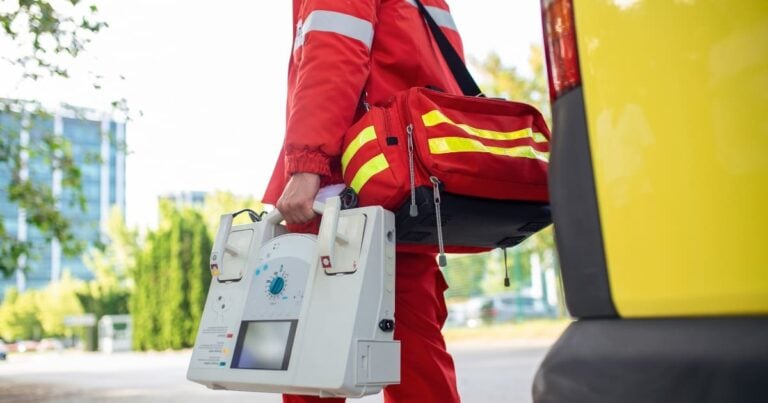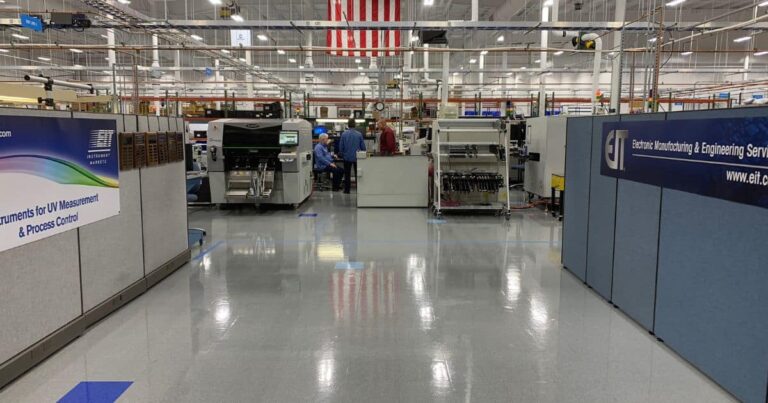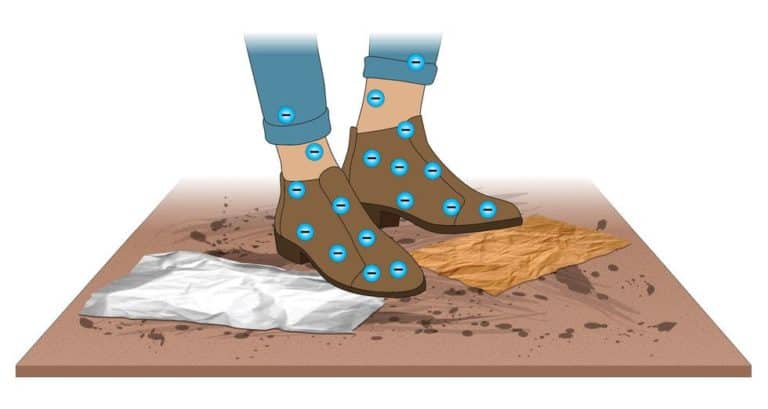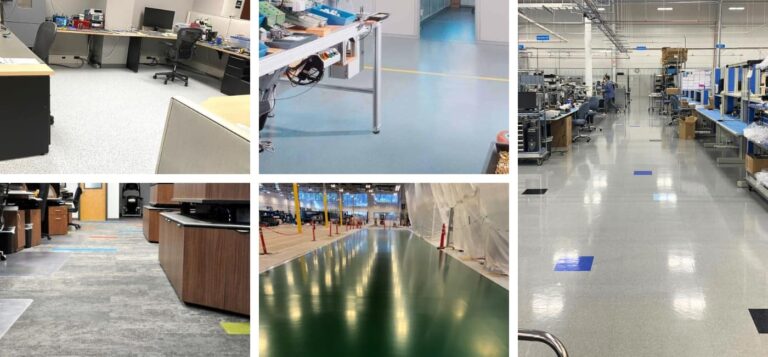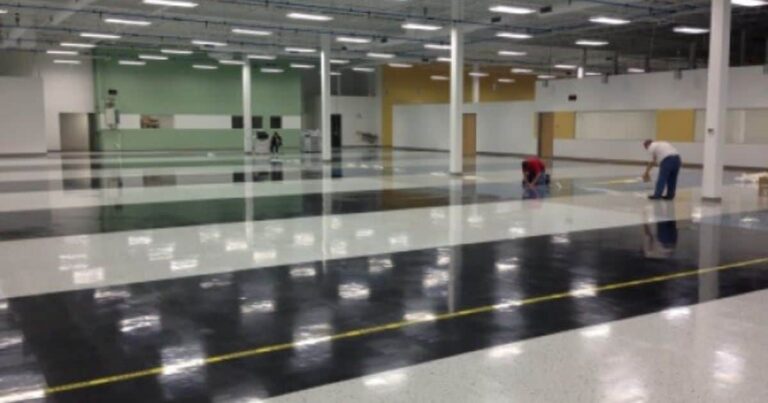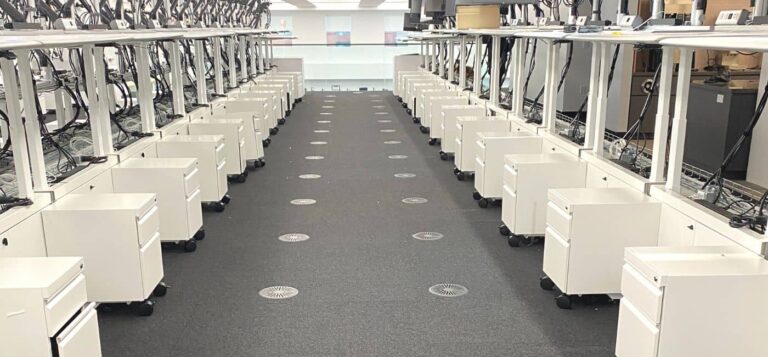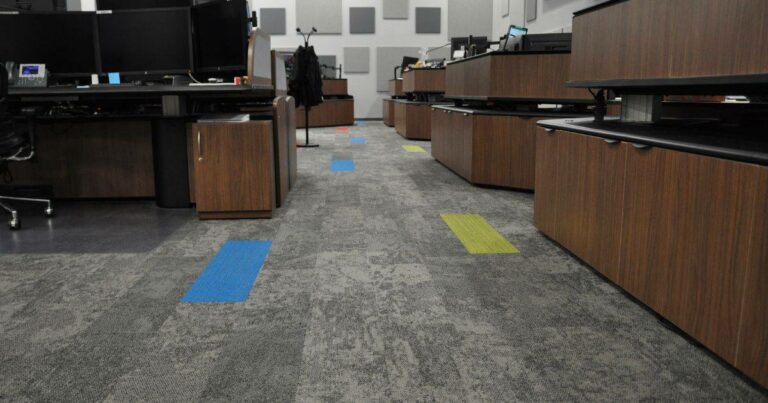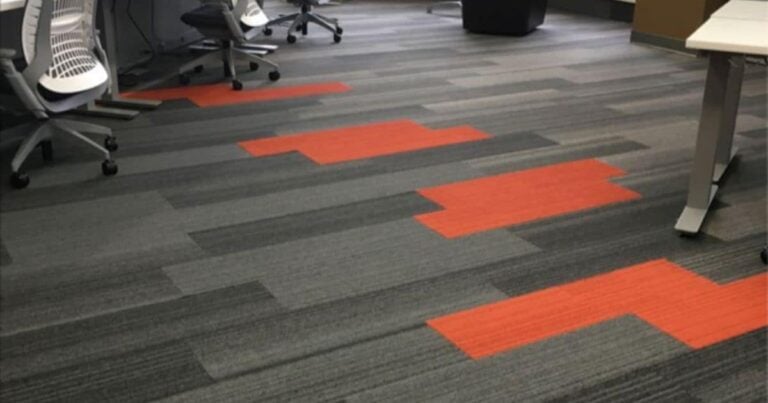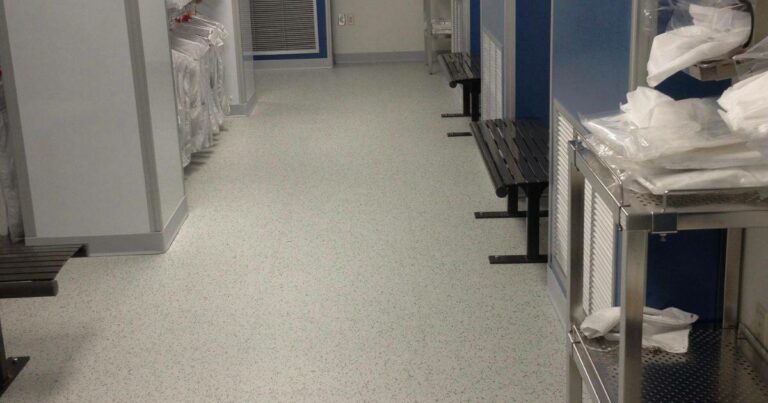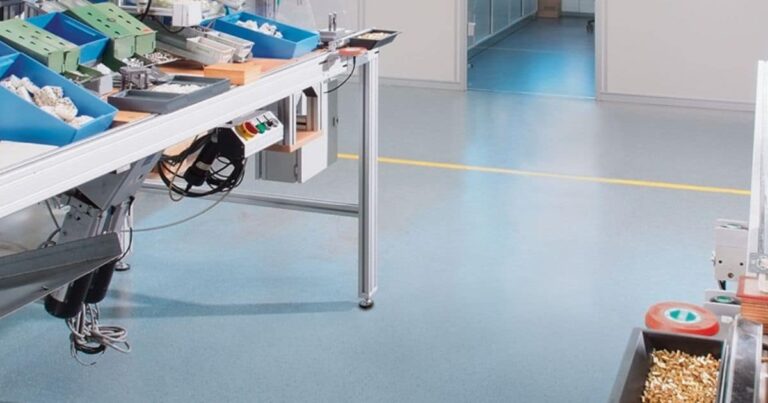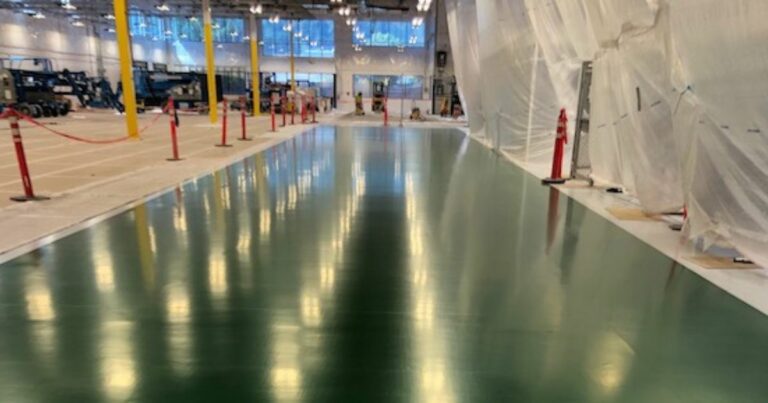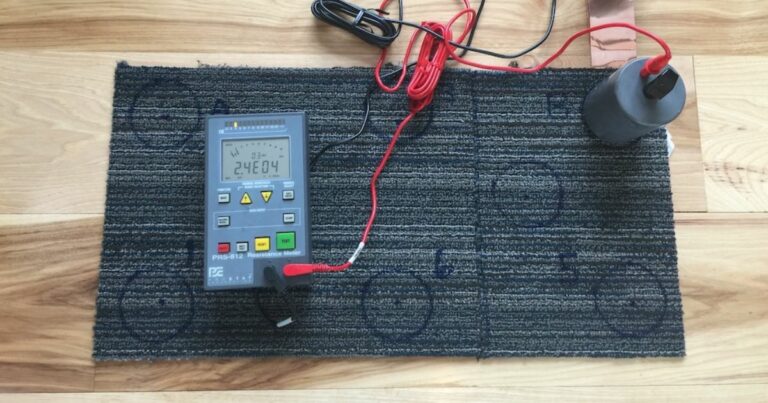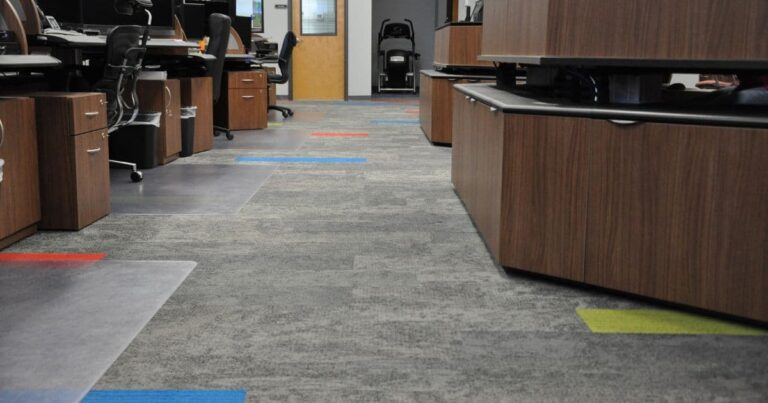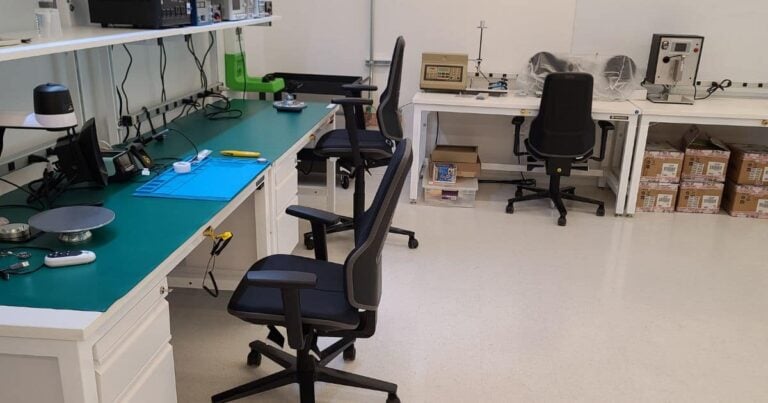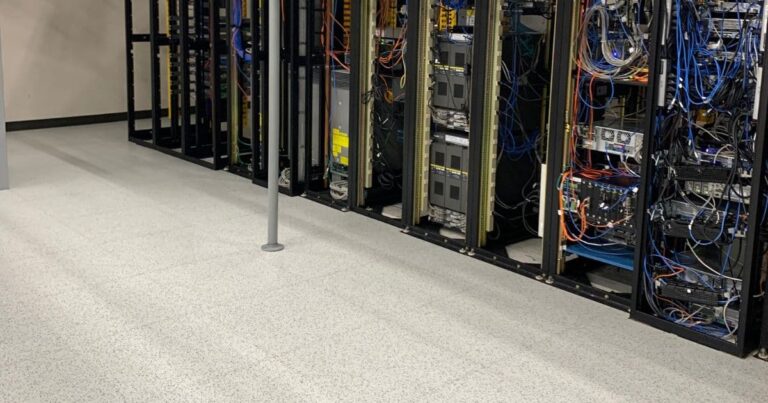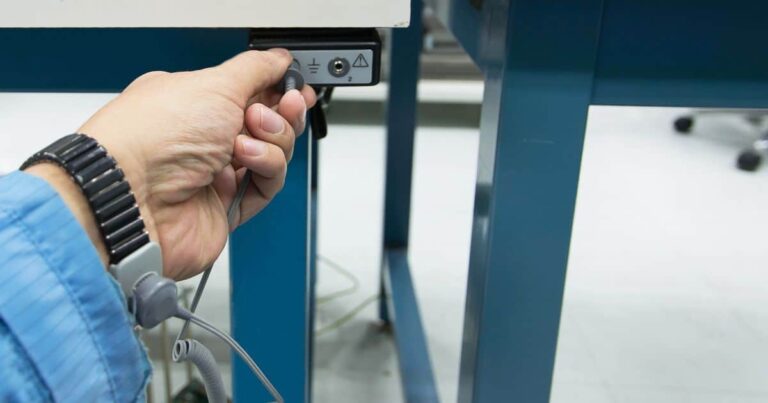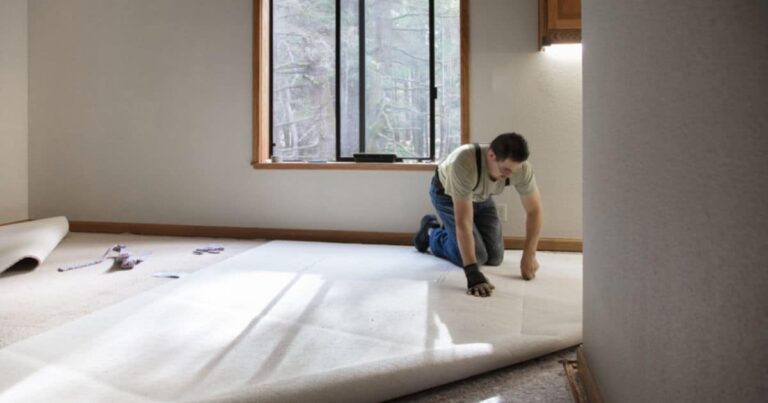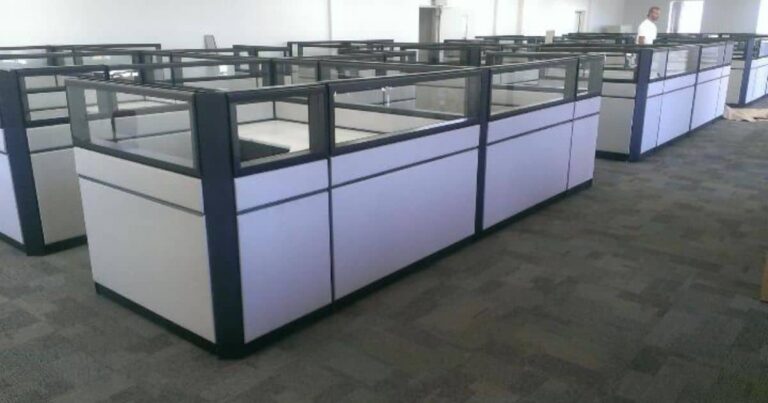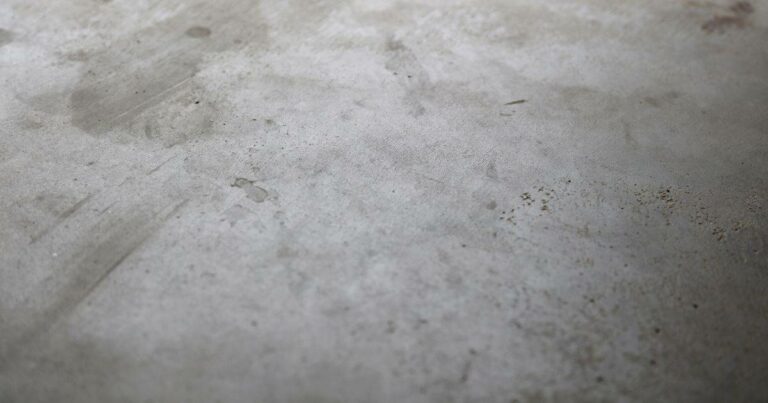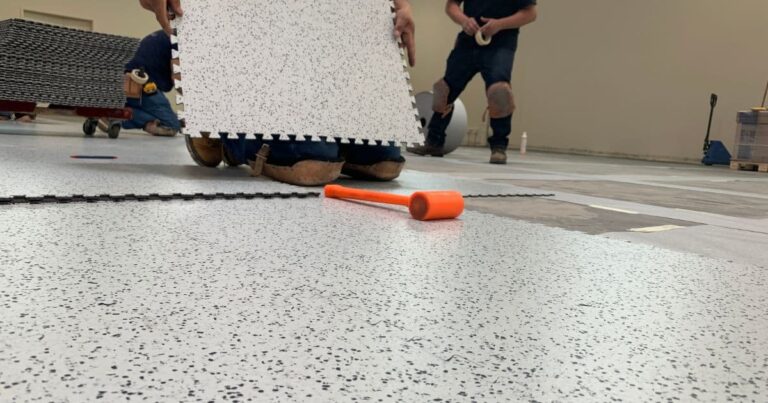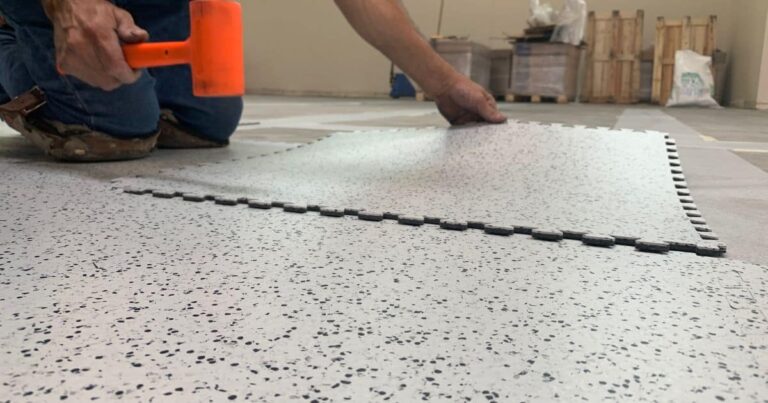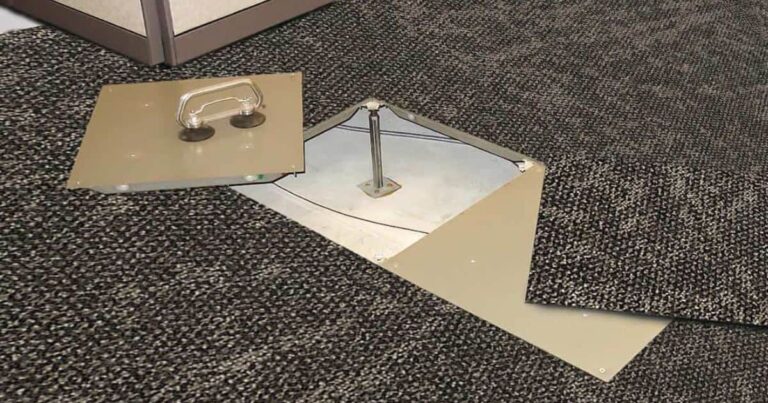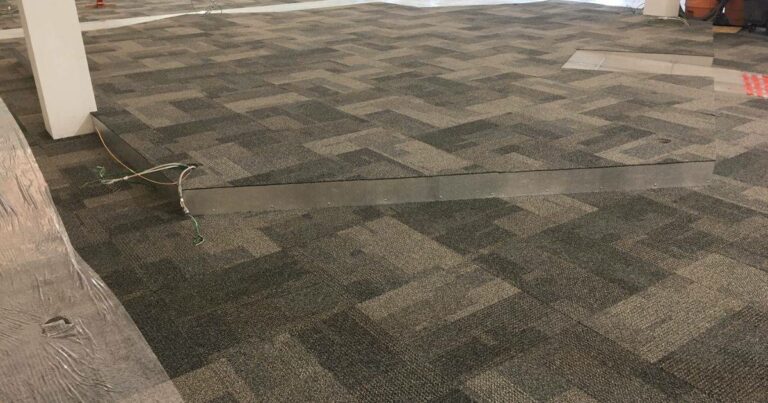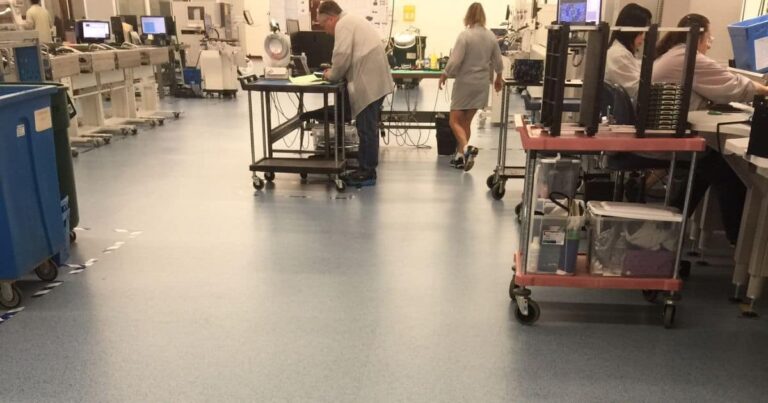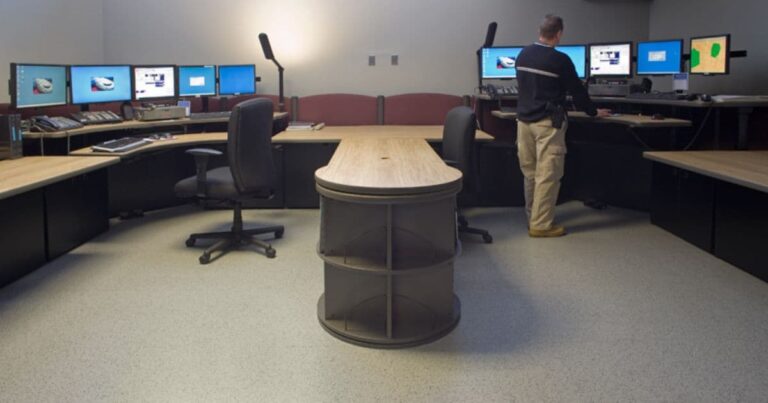FAQ: How does static-dissipative flooring protect electronic equipment?
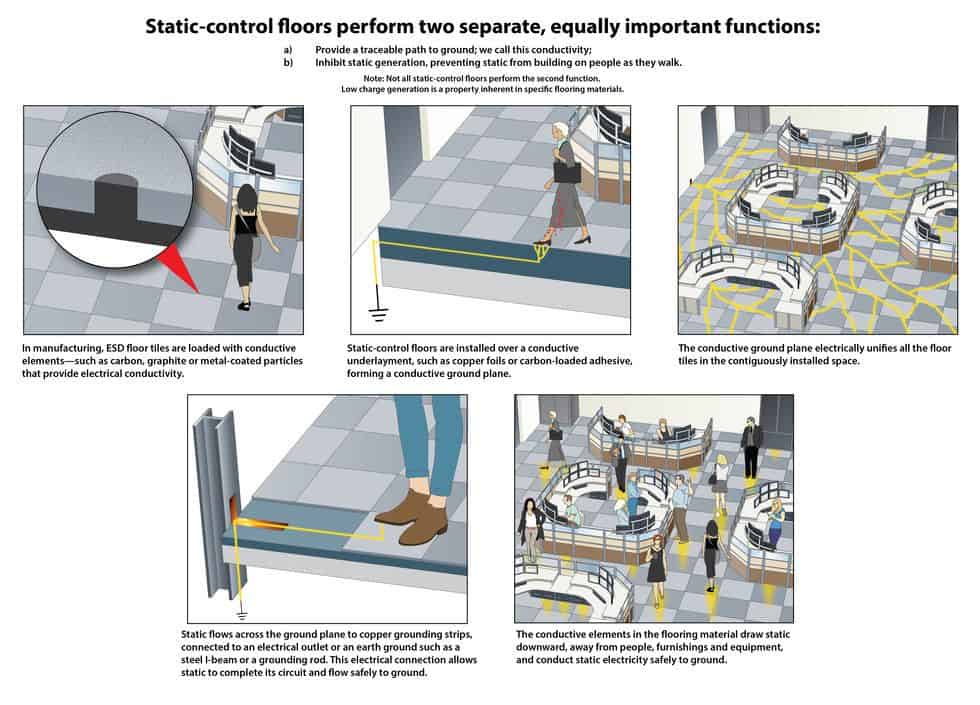
Static-dissipative flooring helps to protect sensitive electronic equipment from harm caused by random electrostatic discharge (ESD) events. When people or mobile objects move across a floor, friction between their shoe soles or wheels and the flooring surface generates static electricity. When the person or object comes into contact with someone or something else, accumulated static charges jump from their body to the other person or object. If they happen to touch an electronic component, the sudden jolt of electricity can damage or destroy its internal circuitry. Some static-dissipative floors are also antistatic, which means they prevent static from generating in the first place. To prevent static charge generation, some floors, such as ESD vinyl and epoxy, require everyone walking in the space to wear ESD-control footwear.
More FAQs
Learning Center Articles
- ESD Basics
- Installation & Maintenance
- Selecting & Specifying an ESD Floor
- Technical Information
- 7 Common Mistakes Selecting an ESD floor
- A Guide to ESD Flooring Selection
- Avoid Costly Failures: What You Need to Know When Specifying ESD Flooring
- Choosing ESD Flooring for:
- ESD Footwear: What Is It and When Is It Necessary?
- ESD Footwear for Electronics Manufacturing and Handling Applications
- Facility Managers’ Guide to Selecting ESD Flooring
- The Need for Due Diligence in Specifying Static-Free Flooring
- Standard of Care for Specifying Floors in Mission-Critical Spaces
- Understanding the Hidden Costs of ESD Flooring

StaticWorx high-performance static-control floors protect electronic components, explosives, and high-speed computers from damage caused by static electricity. ESD flooring is part of a system. Choices should always be based on objective, researched evidence. When you partner with us, we look at all possible items that may need to integrate with the floor, and, focusing on your goals and objectives, help you find the right floor for your application.




